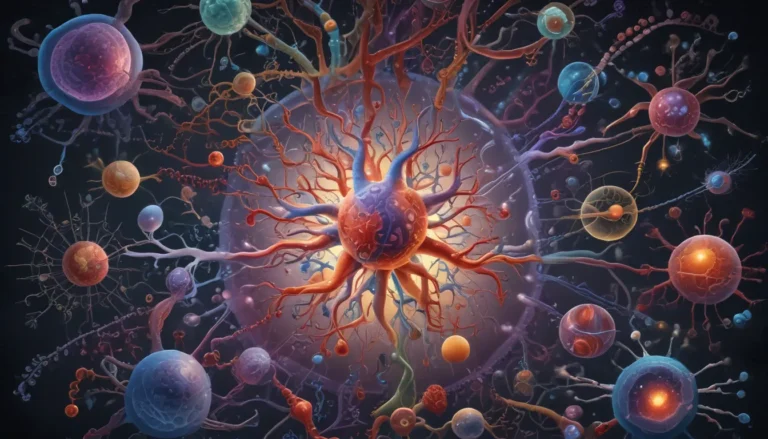A Note About Images: The images used in our articles are for illustration purposes only and may not exactly match the content. They are meant to engage readers, but the text should be relied upon for accurate information.
Have you ever paused to ponder the extraordinary intricacies of your visual system, the gateway through which you perceive the world? Our eyes are not just windows to the soul; they are also marvels of biological engineering, enabling us to navigate our surroundings, enjoy the beauty of vibrant colors, and react swiftly to potential dangers. Join us on a captivating journey as we unveil eight remarkable facts that illuminate the wonders of the visual system and deepen your appreciation for this essential sensory tool.
Unraveling the Spectrum: The Human Eye’s Color Vision
The human eye is a masterful painter, capable of discerning an astonishing spectrum of colors thanks to specialized cells called cones. While most individuals possess three types of cones allowing them to perceive around one million hues, rare individuals with tetrachromacy possess an extra cone, enabling them to distinguish a staggering 10 million colors! This extraordinary capability of our visual system allows us to appreciate the rich tapestry of colors that adorn our world.
The Blink of an Eye: A Glimpse into Rapid Eye Movement
Have you ever considered the remarkable frequency at which your eyes blink? On average, the human eye blinks approximately 15 to 20 times per minute, translating to a staggering 28,800 blinks per day! This involuntary action serves to keep our eyes moist, clear debris, and prevent dryness. Interestingly, our blink rate increases when engaged in tasks requiring intense focus, safeguarding our ocular health and ensuring clear vision.
The Brain’s Visual Playground: Processing Visual Information
While our eyes serve as the gatekeepers of visual stimuli, it is the brain that orchestrates the symphony of visual perception. More than 50% of the brain’s processing power is dedicated to decoding and interpreting visual information received from the eyes. Through this intricate neural dance, our brain transforms signals into meaningful images, allowing us to navigate the world with clarity and purpose.
Speed Demons: The Swift Movements of Ocular Muscles
Despite their petite size, the muscles responsible for eye movements are unparalleled in speed and precision. Capable of reaching velocities of up to 900 degrees per second, these swift eye movements enable us to track moving objects, shift focus rapidly, and scan our surroundings with ease. The eyes’ rapid movements exemplify the efficiency and agility of our visual system in processing dynamic visual information.
Faster than Thought: The Swift Processing of Visual Stimuli
Have you ever marveled at your brain’s lightning-fast response to visual cues? The visual system operates at an astounding pace, processing images within milliseconds before our conscious mind fully registers them. This rapid information processing enables swift identification of objects, facilitating quick reactions such as catching a ball or evading obstacles effortlessly. The seamless integration of visual stimuli with motor responses showcases the remarkable efficiency of our visual system.
Guardians of Sight: Tears and Eyelashes Protecting Our Eyes
Amidst the hustle and bustle of daily life, our eyes are safeguarded by two unsung heroes—tears and eyelashes. Tears play a vital role in maintaining ocular health by lubricating the eyes, preventing dryness, and protecting delicate tissues. Additionally, eyelashes act as a natural barrier, shielding our eyes from dust, debris, and excessive light, ensuring optimal eye health and clarity of vision.
Childhood Miracles: Development of the Visual System
The journey of visual development commences in childhood, as the intricate connections between the eyes and brain undergo significant maturation. During these formative years, visual acuity improves, contrasts are detected, and depth perception evolves, shaping the foundation of visual perception. Monitoring children’s visual health and providing appropriate eye care are essential to nurturing and supporting their visual development.
Adaptable Vision: The Flexibility of the Visual System in Different Lighting Conditions
Our visual system’s adaptability shines brightly in varying lighting environments, thanks to the dynamic interplay of the iris and pupil. Through meticulous control of pupil size, the iris regulates the amount of light entering the eye, optimizing visual clarity in bright and dim conditions. Whether dilating to welcome more light or constricting to reduce glare, our visual system adeptly adjusts to ensure optimal vision across diverse lighting settings.
Delve Deeper into the Wonders of the Visual System
As we unravel the remarkable facts surrounding the visual system, we gain a newfound appreciation for the intricate mechanisms that grant us the precious gift of sight. From the astounding diversity of color perception to the rapid processing of visual information, the visual system embodies a symphony of biological brilliance. Let us continue to nurture and cherish our visual health, embracing the beauty of the world through the lens of our eyes.
FAQs: Exploring Curiosities About the Visual System
-
What causes color blindness?
Color blindness typically arises from genetic mutations or defects in the cones, the cells responsible for color vision. It can also be acquired due to certain health conditions or medications. -
Do animals possess the same visual system as humans?
Different animal species exhibit diverse visual systems tailored to their unique needs. Some species have more rods for enhanced night vision, while others can perceive ultraviolet light invisible to humans. -
Can the visual system be trained or improved?
While the basic structure of the visual system is largely genetic, specific visual skills can be honed through practice and training. Tasks like peripheral vision and depth perception can be enhanced through targeted exercises. -
How do optical illusions work?
Optical illusions trick our brains into misinterpreting visual information, often due to clever presentation or processing techniques. They reveal the intriguing ways in which our visual system can be influenced by various factors. -
Are common visual problems easily treatable?
Yes, many common visual issues such as nearsightedness, farsightedness, and astigmatism can be effectively corrected with glasses, contact lenses, or refractive surgery. Seeking timely treatment can restore clear vision and enhance overall ocular health.
Embrace the Wonders of Visual Perception
As we immerse ourselves in the captivating realm of the visual system, we uncover an array of extraordinary facts that illuminate the intricate tapestry of our vision. From the vibrant hues of color perception to the seamless coordination of eye movements, each facet of the visual system contributes to our holistic experience of the world. Let us cherish and safeguard our gift of sight, embracing the wonders of visual perception with awe and gratitude.






